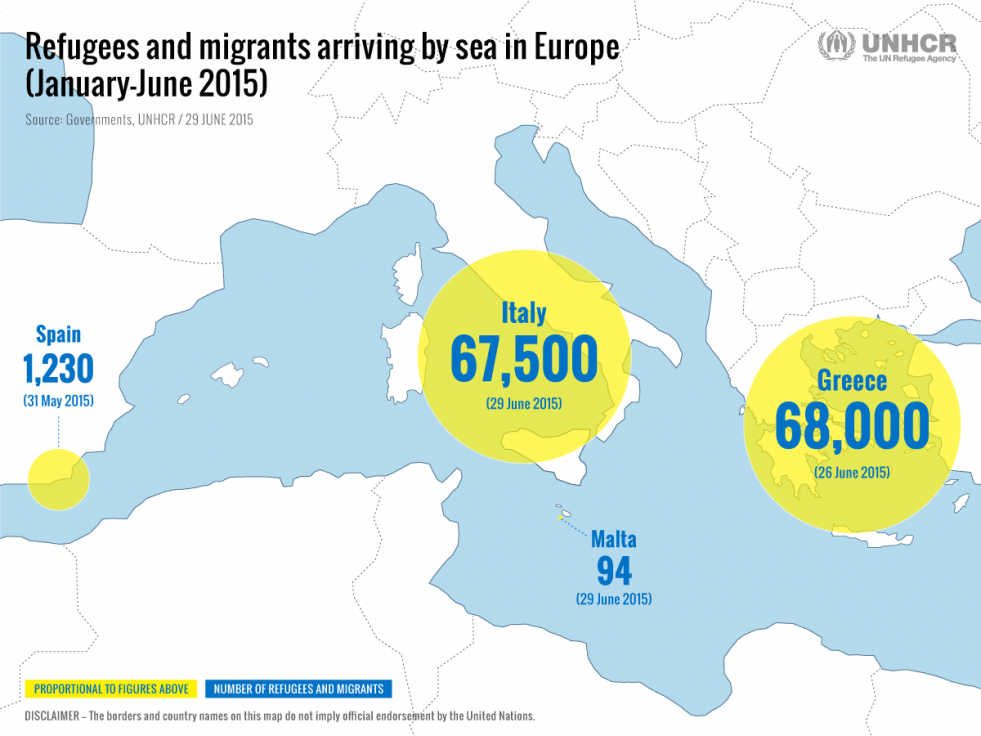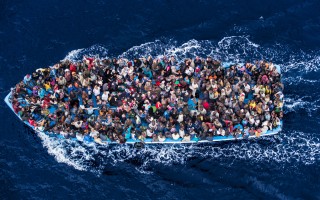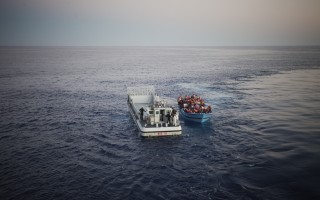A large majority of the thousands of people who made dangerous sea journeys across the Mediterranean into Europe in the first six months of 2015 were fleeing war, conflict or persecution.
This makes the current Mediterranean crisis primarily a refugee crisis, according to a landmark UNHCR report released on Wednesday (July 1).
The report found that one third of the 137,000 men, women and children who arrived by sea in Italy or Greece were from Syria, whose nationals are almost universally deemed to qualify for refugee status or other forms of protection.
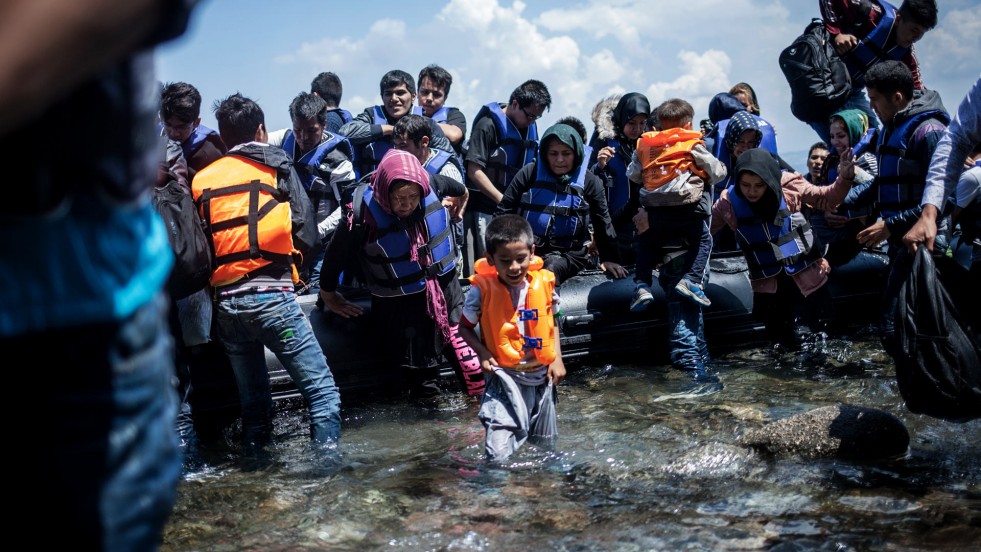
A group of Afghans wade ashore on Mytilini, on the Greek island of Lesvos. ©UNHCR/Socrates Baltagiannis
The second and third most common countries of origin were Afghanistan and Eritrea, whose nationals also in most cases qualify for refugee status.
“As Europe debates the best way to deal with the rising crisis on the Mediterranean, we must be clear: Most of the people arriving by sea in Europe are refugees, seeking protection from war and persecution,” said António Guterres, the UN High Commissioner for Refugees.
Data received from Greece, Italy, Malta and Spain charted a staggering 83 per cent increase in refugees and migrants crossing the Mediterranean from January to June—137,000 compared to 75,000 in the same period last year.
Historically, crossings significantly increase in the second half of the year, in particular over the summer months, so it is expected that the numbers will continue to soar. Arrivals in the second half of 2014 were almost double those of the first half.
Deaths at sea also rose to record levels in April 2015, and then dropped dramatically in May and June. Between January and March, 479 refugees and migrants drowned or went missing, as opposed to 15 during the first three months of the year before.
In April the situation was particularly bleak. In a number of concurrent wrecks, an unprecedented 1,308 refugees and migrants drowned or went missing in a single month, compared to 42 in April 2014.
Most of the people arriving by sea in Europe are refugees, seeking protection from war and persecution
In May, the number of refugees and migrants drowned or missing at sea fell to 68, a quarter of the figure of 226 only one year earlier. The downward trend continued in June, which saw 12 deaths compared to 305 in 2014. Nevertheless, this means that in the first six months of this year there were a reported 1,867 people drowned or missing at sea.
“The decline in people drowning over the past two months is encouraging; a sign that with the right policy, backed by an effective operational response, it is possible to save more lives at sea,” said Guterres. “Nonetheless, we must stay vigilant. For the thousands of refugees and migrants who continue to cross the Mediterranean every week, the risks remain very real.”
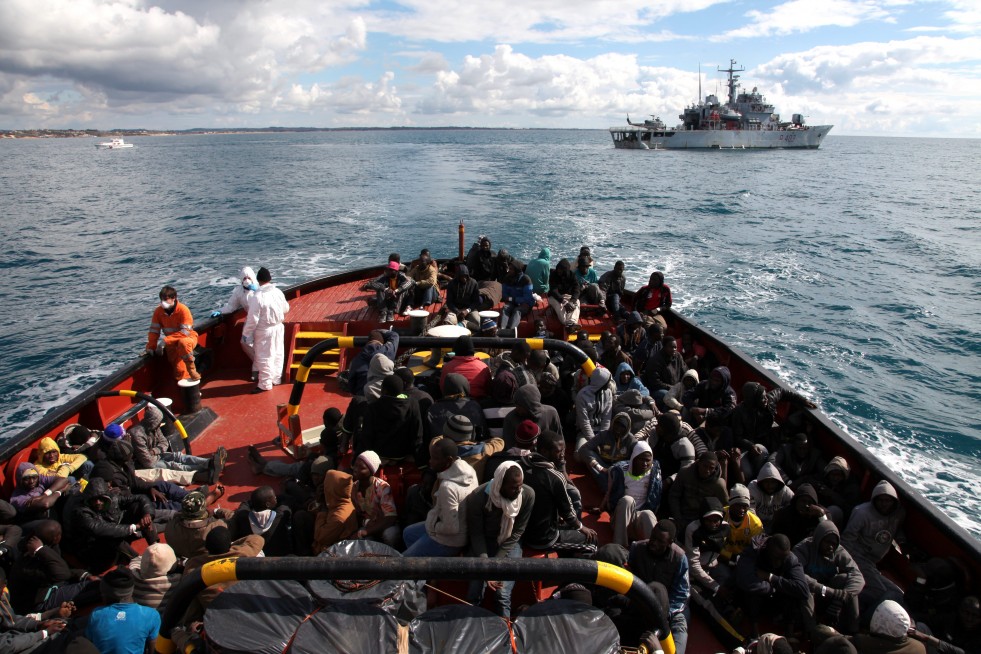
Refugees and migrants wait to disembark from an Italian Navy Ship onto a tugboat that will take them to Pozzallo. ©UNHCR/Francesco Malavolta
The report shows that the eastern Mediterranean route from Turkey into Greece has now surpassed the central Mediterranean route—from North Africa to Italy—as the main source of maritime arrivals.
The majority of those arriving in Greece are refugees from Syria. Many first fled to neighbouring countries, such as Turkey and Lebanon.
But after years of rising pressure and insufficient international support, the economies and infrastructure of many refugee-hosting countries are struggling to cope, making it increasingly difficult for refugees to find work, shelter, health care, and education. As humanitarian appeals to assist them go underfunded, many have no choice but to move on.
After arriving in Greece, where a limited infrastructure has meant inadequate reception conditions for new arrivals, many refugees and migrants continue their journey across The former Yugoslav Republic of Macedonia and Serbia to and through Hungary.
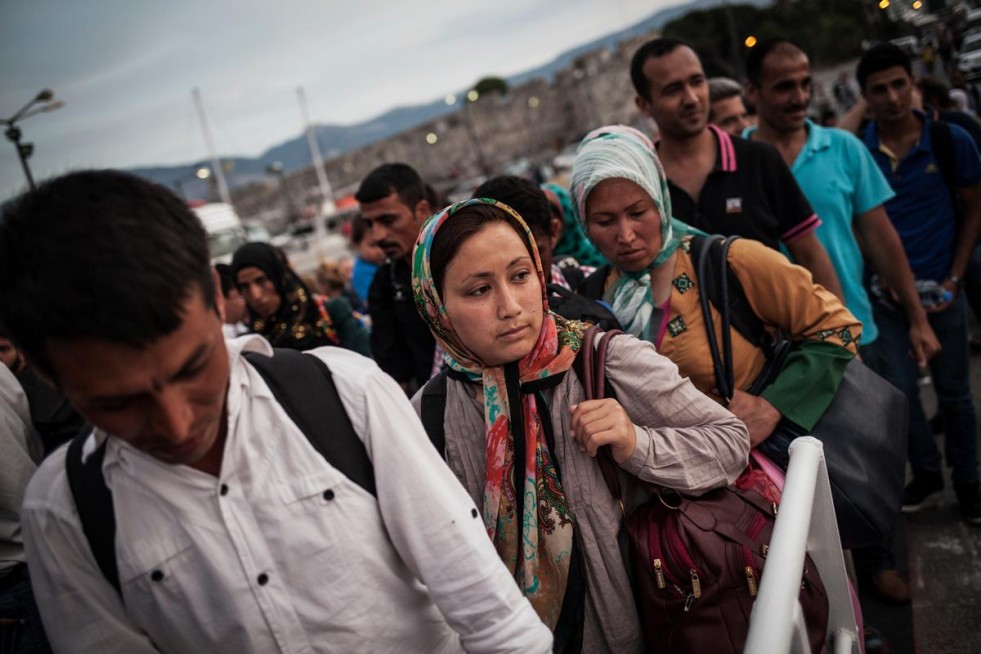
Refugees and migrants line up to board a night ferry from the Greek island of Kos to Athens. ©UNHCR/Socrates Baltagiannis
The report shows that every day, an average of over 1,000 people enter The former Yugoslav Republic of Macedonia from Greece, compared with 200 just a few weeks ago. There are frequent reports of abuse and violence along the way by smugglers and criminal networks.
“Europe has a clear responsibility to help those seeking protection from war and persecution,” said Guterres. “To deny that responsibility is to threaten the very building blocks of the humanitarian system Europe worked so hard to build. European countries must shoulder their fair share in responding to the refugee crisis, at home and abroad.”



